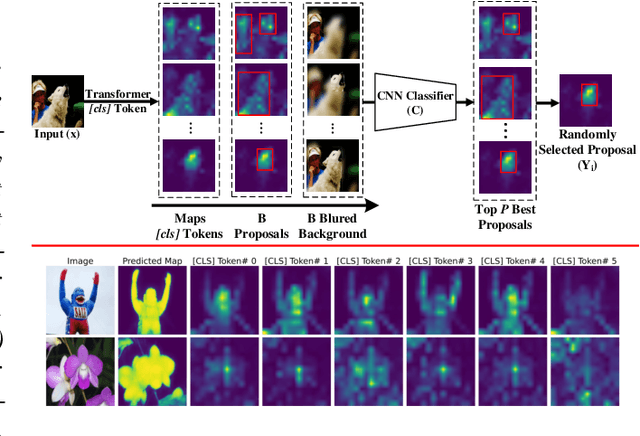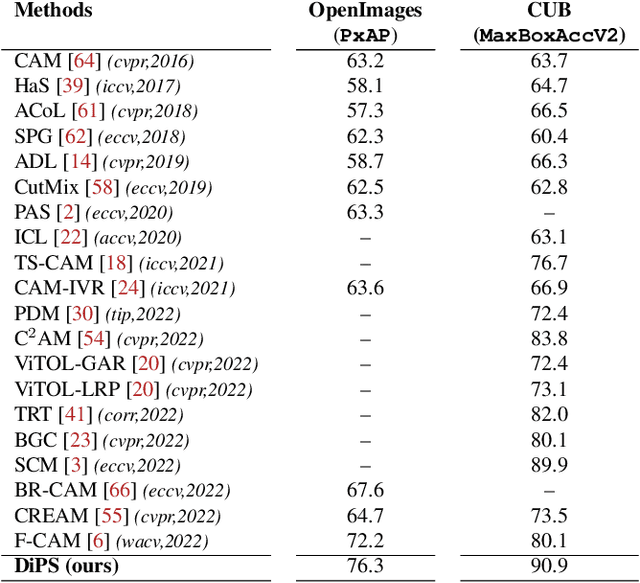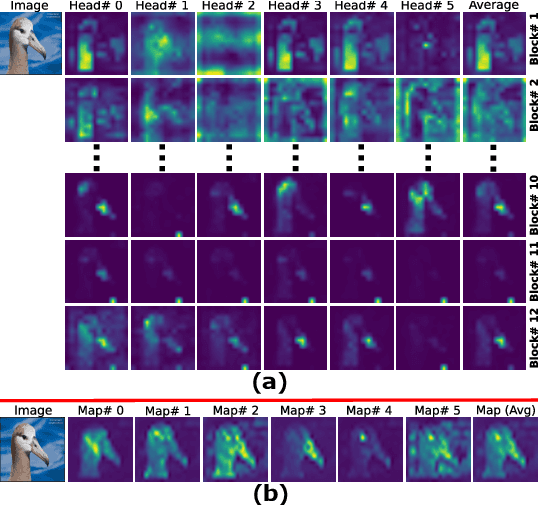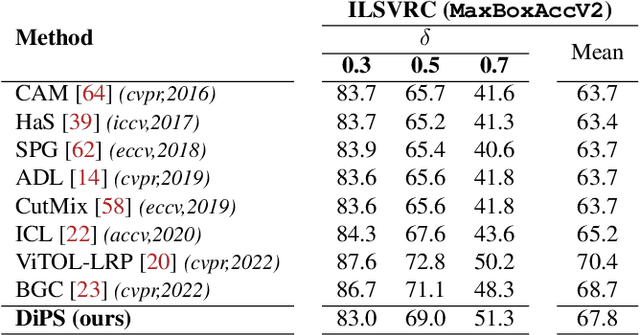Discriminative Sampling of Proposals in Self-Supervised Transformers for Weakly Supervised Object Localization
Paper and Code
Sep 09, 2022



Self-supervised vision transformers can generate accurate localization maps of the objects in an image. However, since they decompose the scene into multiple maps containing various objects, and they do not rely on any explicit supervisory signal, they cannot distinguish between the object of interest from other objects, as required in weakly-supervised object localization (WSOL). To address this issue, we propose leveraging the multiple maps generated by the different transformer heads to acquire pseudo-labels for training a WSOL model. In particular, a new Discriminative Proposals Sampling (DiPS) method is introduced that relies on a pretrained CNN classifier to identify discriminative regions. Then, foreground and background pixels are sampled from these regions in order to train a WSOL model for generating activation maps that can accurately localize objects belonging to a specific class. Empirical results on the challenging CUB, OpenImages, and ILSVRC benchmark datasets indicate that our proposed approach can outperform state-of-art methods over a wide range of threshold values. DiPS provides class activation maps with a better coverage of foreground object regions w.r.t. the background.
 Add to Chrome
Add to Chrome Add to Firefox
Add to Firefox Add to Edge
Add to Edge